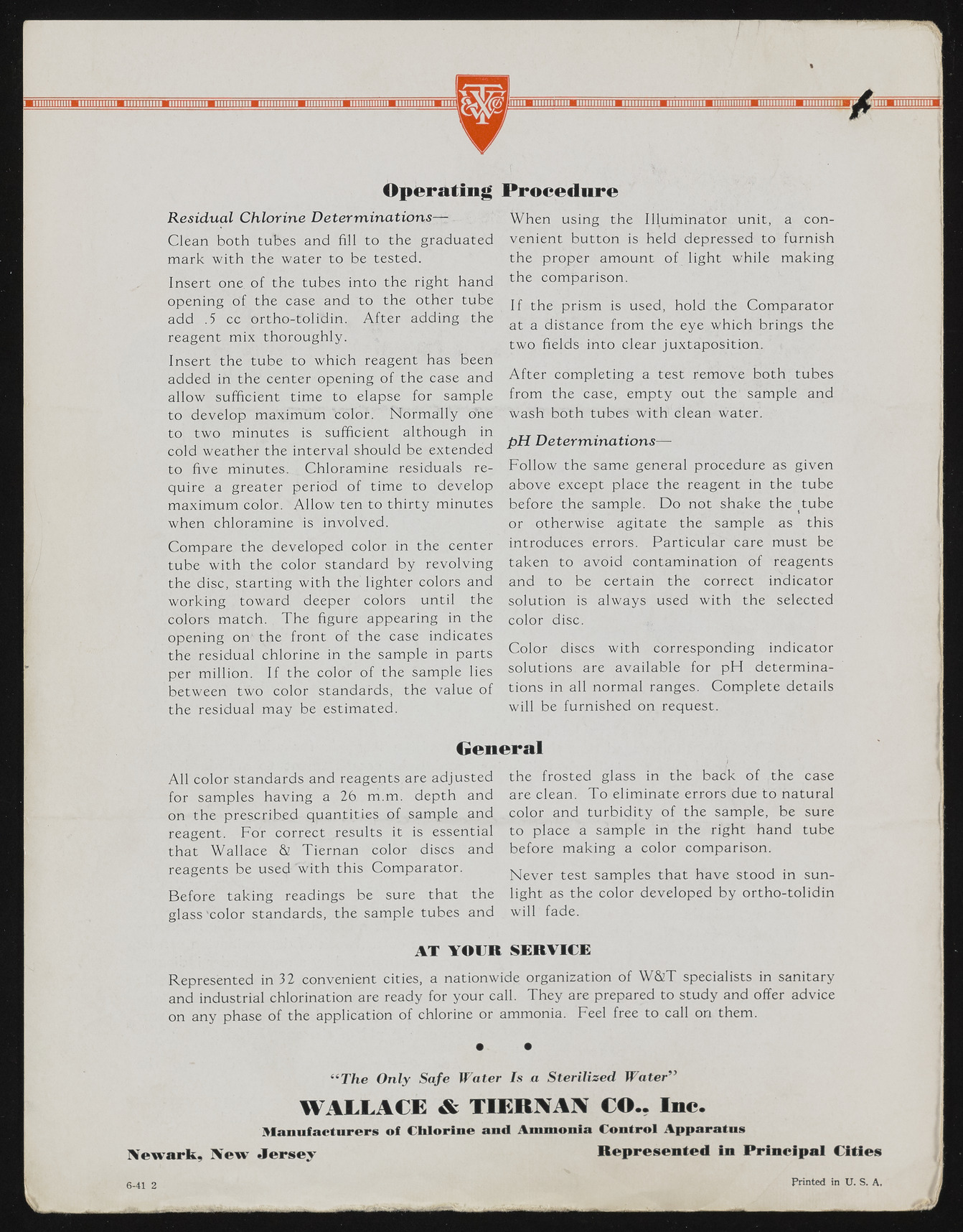Copyright & Fair-use Agreement
UNLV Special Collections provides copies of materials to facilitate private study, scholarship, or research. Material not in the public domain may be used according to fair use of copyrighted materials as defined by copyright law. Please cite us.
Please note that UNLV may not own the copyright to these materials and cannot provide permission to publish or distribute materials when UNLV is not the copyright holder. The user is solely responsible for determining the copyright status of materials and obtaining permission to use material from the copyright holder and for determining whether any permissions relating to any other rights are necessary for the intended use, and for obtaining all required permissions beyond that allowed by fair use.
Read more about our reproduction and use policy.
I agree.Information
Digital ID
Permalink
Details
More Info
Rights
Digital Provenance
Publisher
Transcription
I.llll 1II1111 ? lllll 11II ?nti mini ?ill!murn?iimim liniBii miiimiBimii i ? i 11 n n 1111 ? 11 Operating Procedure Residual Chlorine Determinations— Clean both tubes and fill to the graduated mark with the water to be tested. Insert one. o f the tubes into the right hand opening o f the case and to the other tube add .5 cc ortho-tolidin. A fter adding the reagent mix thoroughly. Insert the tube to which reagent has been added in the center opening of the case and allow sufficient time to elapse for sample to develop maximum color. N orm ally one to two minutes is sufficient although in cold weather the interval should be extended to five minutes. Chloramine residuals require a greater period of time to develop maximum color. Allow ten to thirty minutes when chloramine is involved. Compare the developed color in the center tube with the color standard by revolving the disc, starting with the lighter colors and working toward deeper colors until the colors match. The figure appearing in the opening on' the front of the case indicates the residual chlorine in the sample in parts per million. If the color o f the sample lies between two color standards, the value of the residual may be estimated. When using the Illum inator unit, a convenient button is held depressed to furnish the proper amount o f light while making the com parison. If the prism is used, hold the Com parator at a distance from the eye which brings the two fields into clear juxtaposition. A fter com pleting a test remove both tubes from the case, em pty out the' sample and Wash both tubes with clean water. pH Determinations— Follow the same general procedure as given above except place the reagent in the tube before the sample. D o not shake the ^ube or otherwise agitate the sample as this introduces errors. Particular care must be taken to avoid contam ination of reagents and to be certain the correct indicator solution is always used with the selected color disc. Color discs with corresponding indicator solutions are available for pH determinations in all normal ranges. Com plete details will be furnished on request. General All color standards and reagents are adjusted for samples having a 26 m.m. depth and on the prescribed quantities of sample and reagent. For correct results it is essential that W allace & Tiernan color discs and reagents be used with this Com parator. Before taking readings be sure that the glass'color standards, the sample tubes and the frosted glass in the back of the case are clean. T o eliminate errors due to natural color and turbidity o f the sample, be sure to place a sample in the right hand tube before making a color comparison. N ever test samples that have stood in sunlight as the color developed by ortho-tolidin will fade. A T Y O U R SERVICE Represented in 32 convenient cities, a nationwide organization of W &T specialists in sanitary and industrial chlorination are ready for your call. They are prepared to study and offer advice on any phase of the application of chlorine or ammonia. Feel free to call on them. “ The Only Safe Water Is a Sterilized Water” W A L L A C E & T IE R N A N CO.. In c. M an u factu rers of C hlorine and A m m on ia C ontrol A pparatus N ew ark, N ew Jersey R epresented in P rincipal Cities 6-41 2 Printed in U. S. A,

